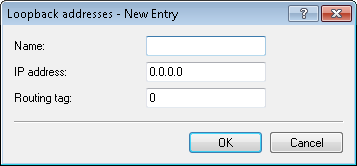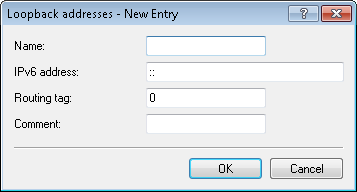Your device can be assigned up to 16 IPv4 and 8 IPv6 loopback addresses where the device can be reached (e.g. for managing larger network structures). To use the loopback addresses for particular networks (e.g. in the context of Advanced Routing and Forwarding), you can assign routing tags to these addresses. To simplify the identification in other configuration units, the loopback addresses can be given freely definable names.
The following steps show you how to set a loopback address.


